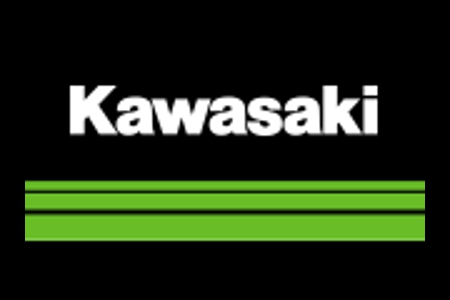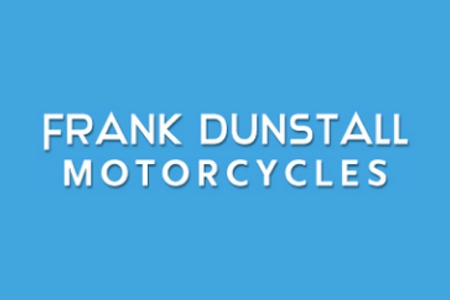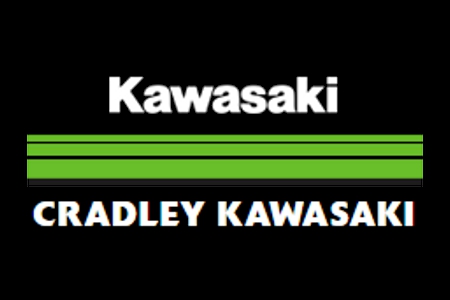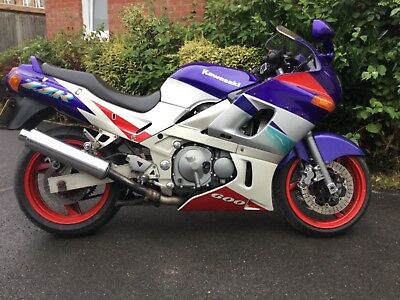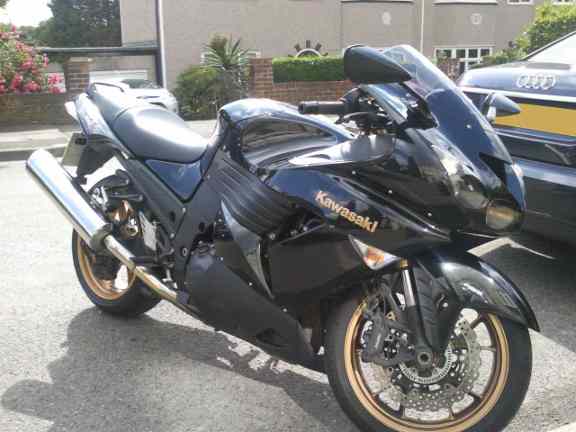My Bike History
I first rode a little 50cc scrambler bike at a County Show aged about 7 years, and the seed was sown, but what got me really hooked was attending the 1984 British Motorcycle Grand Prix at Silverstone. Watching the likes of Barry Sheene, "Rocket" Ron Haslam, Randy Mamola and Eddie Lawson hurtle round the track at insane speeds, just a man, an engine and two wheels, was nothing short of spellbinding. From that point on, I was going to ride bikes.Fast forward to 1989, and I was old enough to legally ride a bike (under 50cc) on the road. I don't think anyone's parents ever WANT their kids to get a bike, but at the time I was reliant on my father for lifts to and from school, some 8 miles from home, and his working hours meant I spent a lot of time there outside of normal hours. So, I suggested that I might need to get my own transport, otherwise I was at risk of failing my exams, and remarkably that seemed to do the trick ! 2 days before my 16th birthday a 1981 Honda MB5 was delivered to my home. It wasn't new or particularly shiny, but it blew away any previous birthday or Christmas presents I had ever had.
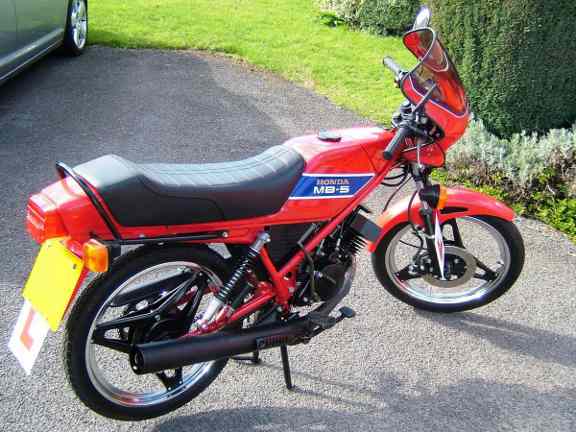
Honda MB5
The Honda MB5 had a 49cc two-stroke single-cylinder engine developing a mighty 2.52bhp (2.55 PS), and was sold in the UK between 1979 and 1981. Believe it or not, there is still the odd enthusiast (and example) of this bike around today !
The new bike was a 1987 Yamaha TZR-125, which I retro-fitted with the optional fairing and, once I had passed my bike test, had de-restricted, which took it from 12bhp to 20bhp. It looked pretty awesome for those days, and had a wicked power band which kicked in at 7000rpm. You could buy a power valve kit which would have increased maximum power and made the delivery a lot smoother, but I never got round to doing that. I took a couple of my mates out on the bike quite often (only one at a time obviously) and they became very familiar with that powerband. I clearly remember them nervously tightening their grip around my waist as the engine note rose towards the critical 7000rpm mark at which the acceleration would suddenly increase. With just me on it, and with a following wind, on a private runway of course (ahem !) I managed to touch 100mph on that bike.
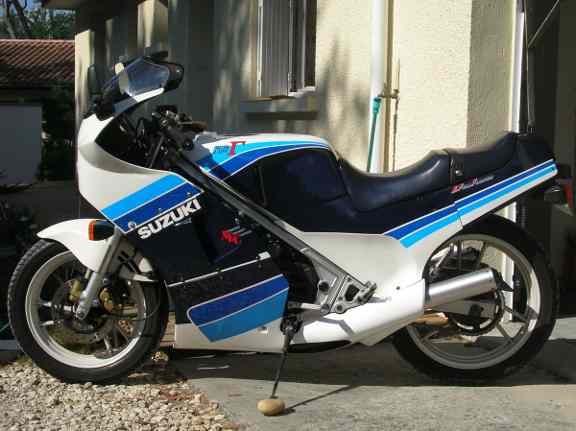
Suzuki RG250 Gamma
The Suzuki RG250 Gamma had a 247cc twin-cylinder two-stroke engine producing 45bhp (45.6PS), but the less said about this bike probably the better ! The handling was questionable, it was not very reliable, and I prefer now as then the styling of the TZR125.
This was the point where I realised that you never actually get any money out of an Insurance company, they always get it back one way or another. I received a paltry payout, and for the next few years my premiums would have been so heavily loaded that I simply could not afford to own a bike. Instead I had to buy a car, a 1985 Mark 2 Astra. Actually that was far more practical while I was at University, and I have had a car ever since, but the fascination had not gone away. Once I finished Uni and was working full-time again, another bike was on the agenda. That's when I bought my first properly fast bike, a 1994 Kawasaki ZZR600.
Eventually, sadly, that universal truth kicked in again, this time coming in the form of a pensioner who did not understand how traffic light phasing worked. More pain and suffering, and this time I insisted the guy was prosecuted, which he was, and convicted. Hopefully he didn't try to drive a car again. This one shook me up quite badly, and for a while I almost gave up biking altogether, but that made me very unhappy. I give full credit to my mate and fellow biker Andy Stone, who persuaded me to "get back on the horse", and after a few months I bought my first ever brand-new bike, a 1997 Kawasaki ZZR1100. I had looked at the Honda CBR1000RR Fireblade and the CBR1100XX Super Blackbird. I had looked at the Yamaha YZF1000 Thunderace. I had even looked at the Suzuki GSX-R1100, although remembering the Gamma I almost immediately laughed and looked away again. But in the end there was no contest, it had to be the Kawasaki.
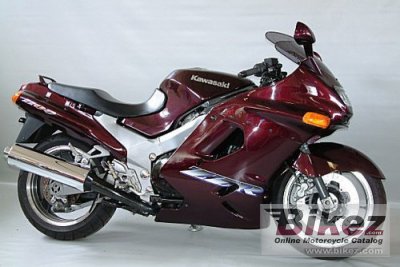
Kawasaki ZZR1100
The 1997 model Kawasaki ZZR1100 had a four-stroke 1052cc 16V DOHC, in-line four-cylinder engine with quad Keihin G133 carbs and produced 156bhp (158PS).
This is a blisteringly, astonishingly, ludicrously fast bike. Whatever speed you are doing, in whatever gear, if you twist the throttle it will accelerate hard, serving up lashings of the kind of thick, creamy power that you can only get from a big engine. Sadly, as of 2020, the bike has just gone out of production due to EU emissions legislation. The replacement is the Kawasaki Ninja H2, which although technically faster and more powerful, is only 998cc and uses "trick engineering" to get the extra horsepower. This means the midrange is nowhere near as satisfying. I now intend to keep my ZZR1400 on the road for as long as possible, because there is no other bike I want.
The Kawasaki Ninja H2
Due to the projected cost of updating the the mighty ZZR1400 in order to comply with the latest EU emissions legislation, the decision was made to replace it as Kawasaki's flagship sports tourer machine with an all-new model, the Ninja H2. At 998cc the engine is considerably smaller, but it employs a variable-speed centrifugal-type Supercharger in order to extract a slightly higher maximum output of 210bhp (213PS) with ram-air. However, reports are that this makes the mid-range far less satisfying than on the ZZR1400, and ultimately there is just no substitute for cubic capacity.The bike is also available in a track-only version, the H2R, with weight reductions and a higher supercharge boost giving a maximum power output of 326bhp (331PS), making it currently the fastest and most powerful production motorcycle on the market.
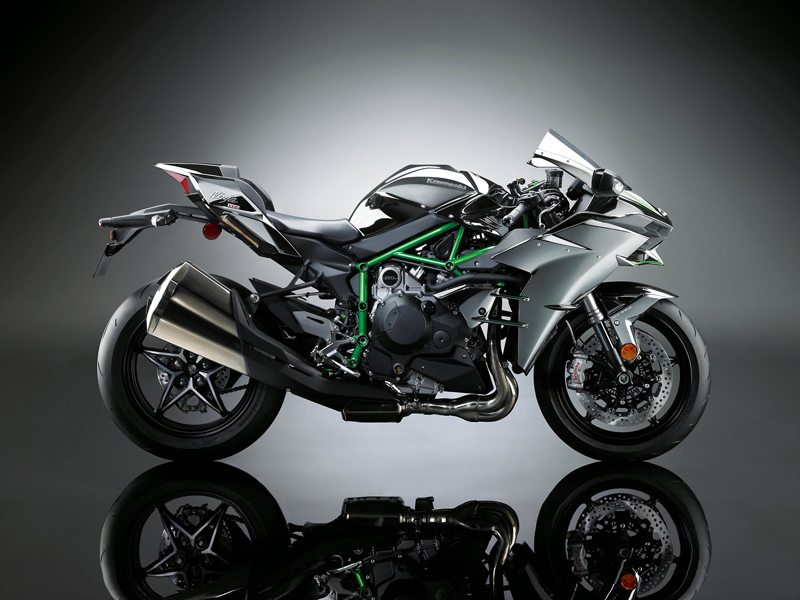
Kawasaki Ninja H2
The Kawasaki Ninja H2 has a Supercharged 998cc 16-valve DOHC, fuel-injected in-line four-cylinder engine producing 210bhp (213PS).
Links
Here are some biking-related links which may be of interest